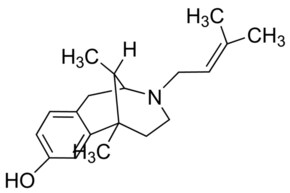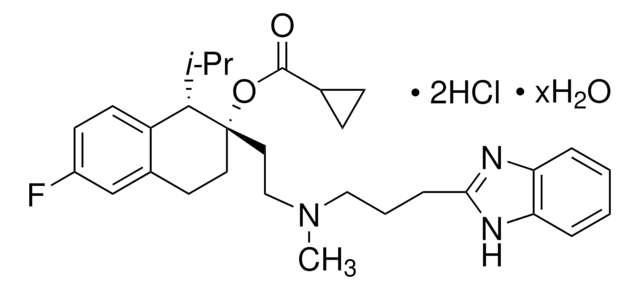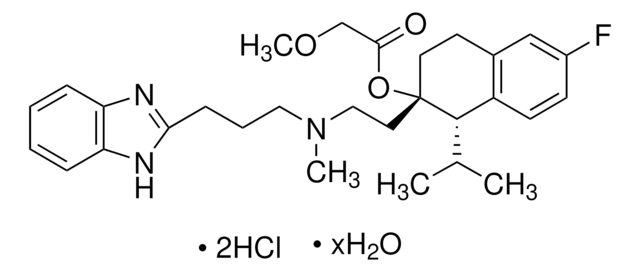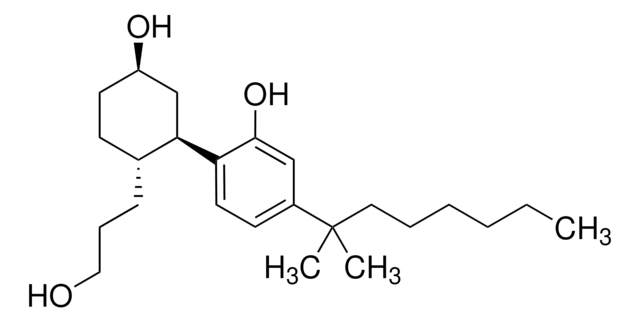Key Documents
About This Item
Polecane produkty
Postać
solid
Poziom jakości
aktywność optyczna
[α]23/D +134.6°, c = 1 in chloroform(lit.)
kontrola substancji
USDEA Schedule IV; Home Office Schedule 3; stupéfiant (France); kontrollierte Droge in Deutschland; regulated under CDSA - not available from Sigma-Aldrich Canada; psicótropo (Spain); Decreto Lei 15/93: Tabela IIC (Portugal)
kolor
white
inicjator
Sanofi Aventis
ciąg SMILES
[H][C@@]12Cc3ccc(O)cc3[C@@](C)(CCN1C\C=C(\C)C)[C@@H]2C
InChI
1S/C19H27NO/c1-13(2)7-9-20-10-8-19(4)14(3)18(20)11-15-5-6-16(21)12-17(15)19/h5-7,12,14,18,21H,8-11H2,1-4H3/t14-,18+,19+/m1/s1
Klucz InChI
VOKSWYLNZZRQPF-CCKFTAQKSA-N
informacje o genach
human ... EBP(10682)
rat ... Chrm1(25229) , Chrm2(81645) , Drd2(24318) , Oprm1(25601)
Działania biochem./fizjol.
Cechy i korzyści
Przestroga
Rekonstytucja
Hasło ostrzegawcze
Warning
Zwroty wskazujące rodzaj zagrożenia
Zwroty wskazujące środki ostrożności
Klasyfikacja zagrożeń
Acute Tox. 4 Dermal - Acute Tox. 4 Inhalation - Acute Tox. 4 Oral
Kod klasy składowania
11 - Combustible Solids
Klasa zagrożenia wodnego (WGK)
WGK 3
Temperatura zapłonu (°F)
Not applicable
Temperatura zapłonu (°C)
Not applicable
Środki ochrony indywidualnej
dust mask type N95 (US), Eyeshields, Gloves
Certyfikaty analizy (CoA)
Poszukaj Certyfikaty analizy (CoA), wpisując numer partii/serii produktów. Numery serii i partii można znaleźć na etykiecie produktu po słowach „seria” lub „partia”.
Masz już ten produkt?
Dokumenty związane z niedawno zakupionymi produktami zostały zamieszczone w Bibliotece dokumentów.
Nasz zespół naukowców ma doświadczenie we wszystkich obszarach badań, w tym w naukach przyrodniczych, materiałoznawstwie, syntezie chemicznej, chromatografii, analityce i wielu innych dziedzinach.
Skontaktuj się z zespołem ds. pomocy technicznej









